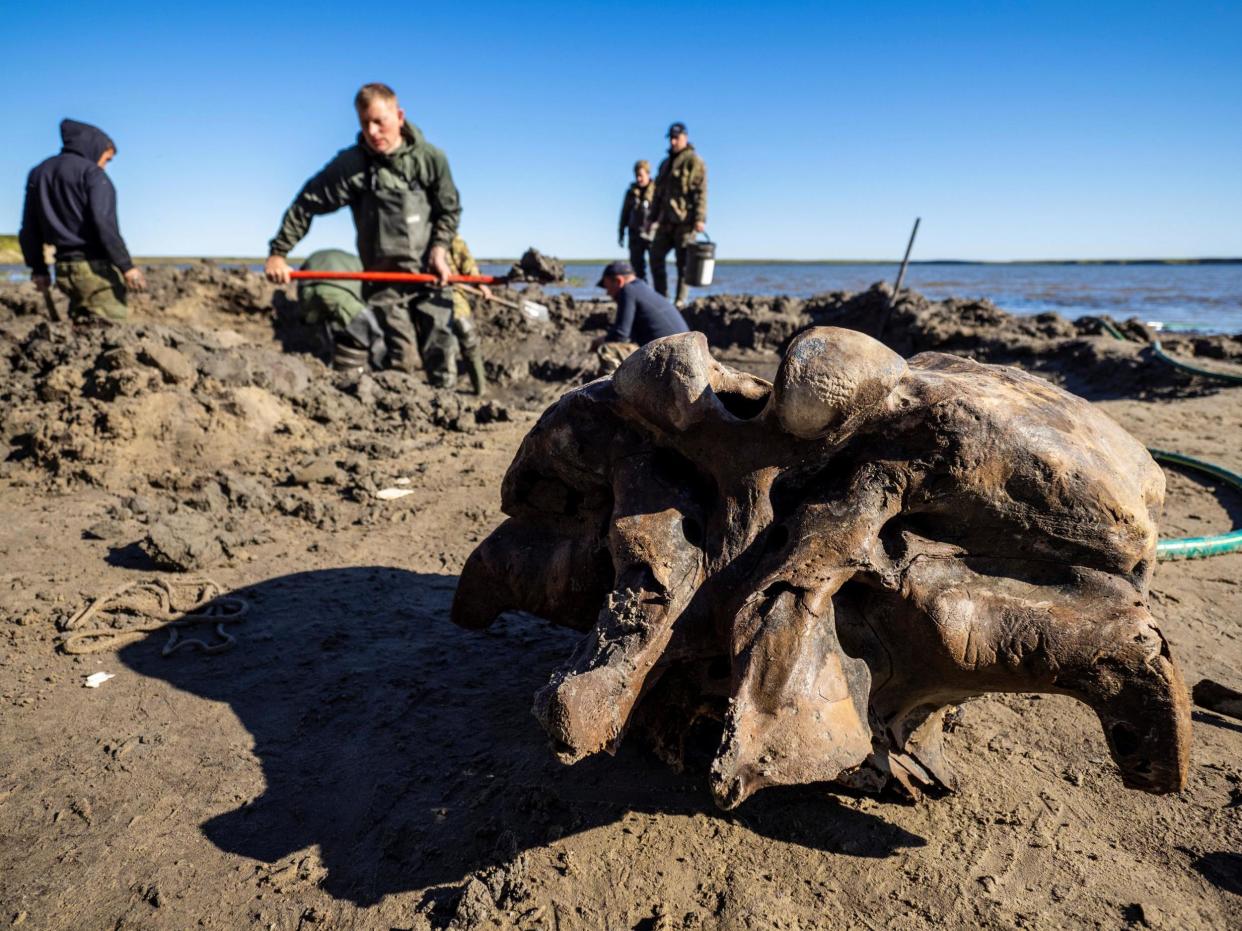Mammoth skeleton thought to be 10,000 years old found in Siberian lake

Russian scientists are studying the well-preserved remains of a woolly mammoth thought to have lived 10,000 years ago, after it was retrieved from a lake in Siberia last month.
Ninety per cent of the animal's skeleton was uncovered during two expeditions to Pechevalavato Lake, which is situated on the Yamal peninsula above the Arctic Circle.
As well as bones, scientists discovered pieces of skin and soft tissue that had survived in the permafrost, according to local media.
Andrey Gusev, of the Centre of Arctic Research, said the bones were in a "chaotic order", which made the task of extracting them more difficult.
‘We thought that the task would be a lot easier, as based on the primary checks we assumed that the bones were preserved in the anatomical order. But the first and the second days of our expedition showed that it was true only about the back part of the skeleton," he said.
Evgenia Khozyainova, who works at the Shemanovsky Museum in Salekhard, Russia, said that the team found "one front and one hind foot well-preserved, with tendons, soft tissues and pieces of skin".
She added that the expedition also uncovered the mammoth's fossilised faeces, known as coprolite, which will allow scientists to obtain information about the animal's diet and about the ancient plants it ate.
The Siberian Times reported that the adult mammoth is likely to be named Tadibe after the surname of the indigenous family that discovered it.
Similar discoveries in Siberia have become more common in recent years because of the global climate emergency, since rising temperatures have caused permafrost in the region to thaw.
A prehistoric puppy, which is believed to be 18,000 years old, is among the remains to be found in the last few years.
Read more
Melting permafrost in Siberia is creating climate change refugees

 Yahoo News
Yahoo News 
